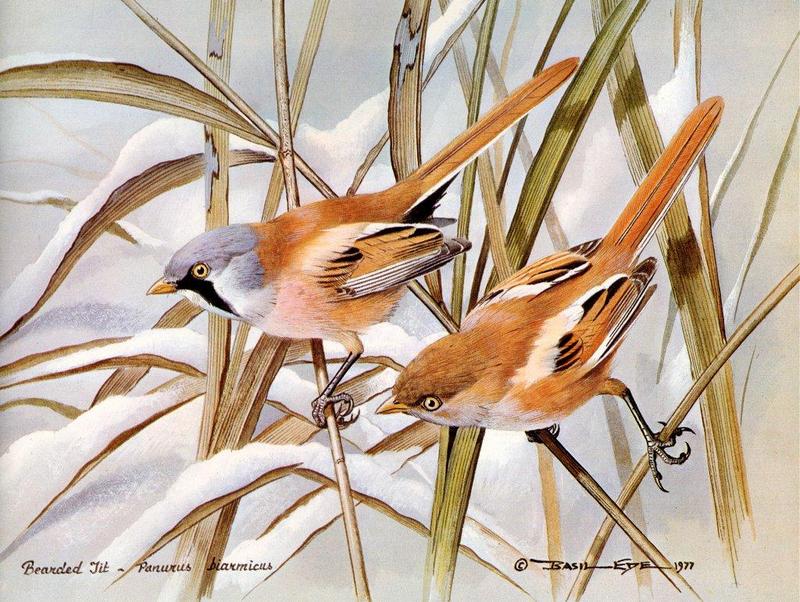|
| Query: bird | Result: 3071st of 32675 | |
[Animal Art - Basil Ede] Bearded Tit, Bearded Parrotbill (Panurus biarmicus) = bearded reedling <!--수염오목눈이-->
| Subject: | [Animal Art - Basil Ede] Bearded Tit, Bearded Parrotbill (Panurus biarmicus) = bearded reedling
| |

| Resolution: 1024x770
File Size: 199759 Bytes
Upload Date: 2005:02:15 01:51:19
|
From: "Carter"
Newsgroups: alt.binaries.pictures.artpics
Subject: Basil Ede...Bearded Tit
Date: Sun, 24 Dec 2000 11:20:29 -0000
Basil Ede
Bearded Tit
BasilEde_BritishBirds-BeardedTit_NC.jpg
수염오목눈이 Panurus biarmicus ( Bearded Tit )
Comments
=========
The bearded reedling (Panurus biarmicus) is a small, long-tailed passerine bird found in reed beds near water in the temperate zone of Eurasia. It is frequently known as the bearded tit or the bearded parrotbill, as it historically was believed to be closely related to tits or parrotbills. Today it is known to lack close relatives and it is the only species in the family Panuridae.
Order: Passeriformes
Family: Panuridae
Genus: Panurus
Species: Panurus biarmicus (Linnaeus, 1758)
Synonyms
- Parus biarmicus Linnaeus, 1758 (protonym) |
^o^
Animal Pictures Archive for smart phones
^o^
|
|